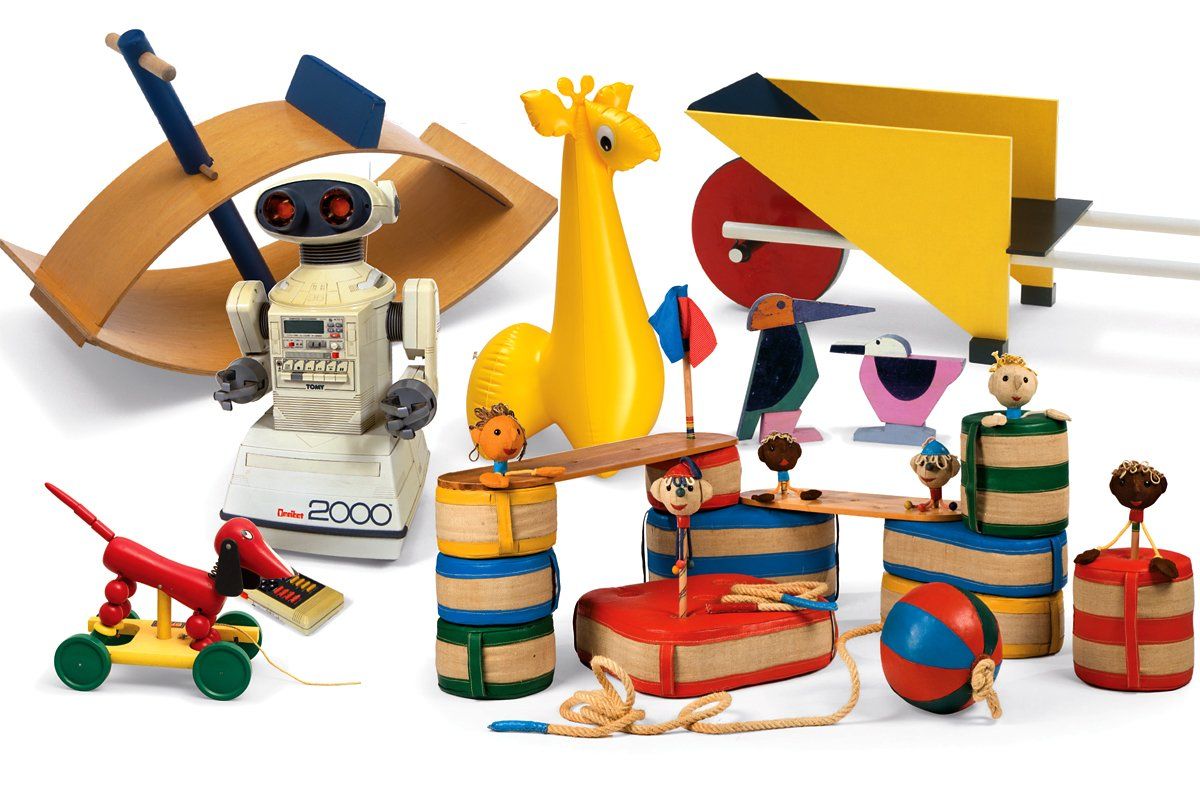
Kids had it good in the 20th century. Designers gave them revolutionary playthings like Lego and Tinkertoys and the Rubik's Cube, made to be both fun and good for them. Geniuses like Frank Lloyd Wright gave them deluxe schools. For the first time in history, children were even granted a room of their own—a playroom—where they could do their own childish thing. Barbie could get it on with Ken while Slinky and Gumby watched, and the orgy was declared creative expression. The 20th century was the "Century of the Child," according to the title of an upcoming show at the Museum of Modern Art in New York. "We're looking at principles and issues that take us to the core of thinking about creativity in every aspect of our culture," says Juliet Kinchin, the 56-year-old Brit who is -MoMA's curator of modern design. "You really see how fundamental design and children are to the modern world."
In the tumult of the last century, governments left and right, democratic and tyrannical, invested lavishly in children and their spaces, as a way to seize the future and plant the national flag there. "The utopian can shade quite quickly into the dystopian, and we wanted to show that," says Kinchin. Her exhibition lays out how the children's "colonies" of fascist Italy and the kindergartens of the Soviet Union each housed their charges in shiny modern structures, away from the old--fashioned views and tastes of their parents. Schoolkids, both receptive and captive, were the ideal audience for radical modern ideas and objects. "Stalin had quite a decent reputation among the youngsters," recalled one Eastern bloc graphic designer. "Our parents were quaking with fear while we were having a great time."
Kinchin's show puts the Sputnik playgrounds of Czechoslovakia beside Barbie's Dream House and the wooden toys of Creative Playthings to give a picture of a culture where children were separate, but better. Kinchin says that the liberated children of the 20th century—"pushing the boundaries ... always testing"—were even held up as a model for adult innovators. Great design schools like the Bauhaus, she says, were conceived to be "just like a big playpen." As Kinchin writes in her show's catalog, "children were the living symbol of the sweeping changes that ushered in the birth of the modern." Already by 1927, the avant-garde painter Wyndham Lewis was complaining about "what now amounts to a cult of childhood and of the child." And the Hamburgler was still a half century off.
All of which makes me wonder about the 21st-century child. She's wearing adult-only clothes, just like her midriff-bearing mom. High-design wooden toys have been displaced by games on the computer—which has left the playroom for the breakfast nook, so parents can police their kids' cyberspace. And so dad can play the games too. Parents and children, heading off by the millions to watch the latest comic-book movie, seem to be living in a shared adolescent twilight. "I think that in many ways [childhood] has gone off the radar," says Kinchin.
Maybe things are just back to how they were before "modern" ideas and designs came along. In her catalog, Kinchin brings up the standard notion that for most of European history, childhood didn't exist as a separate epoch in our lives. Kids were thought of, if they were thought of at all, as short adults with inferior skills. Perhaps now, after a 20th-century blip, children have returned to being undersized grown-ups. Or maybe it's we grown-ups who have become tall kids.
Uncommon Knowledge
Newsweek is committed to challenging conventional wisdom and finding connections in the search for common ground.
Newsweek is committed to challenging conventional wisdom and finding connections in the search for common ground.





